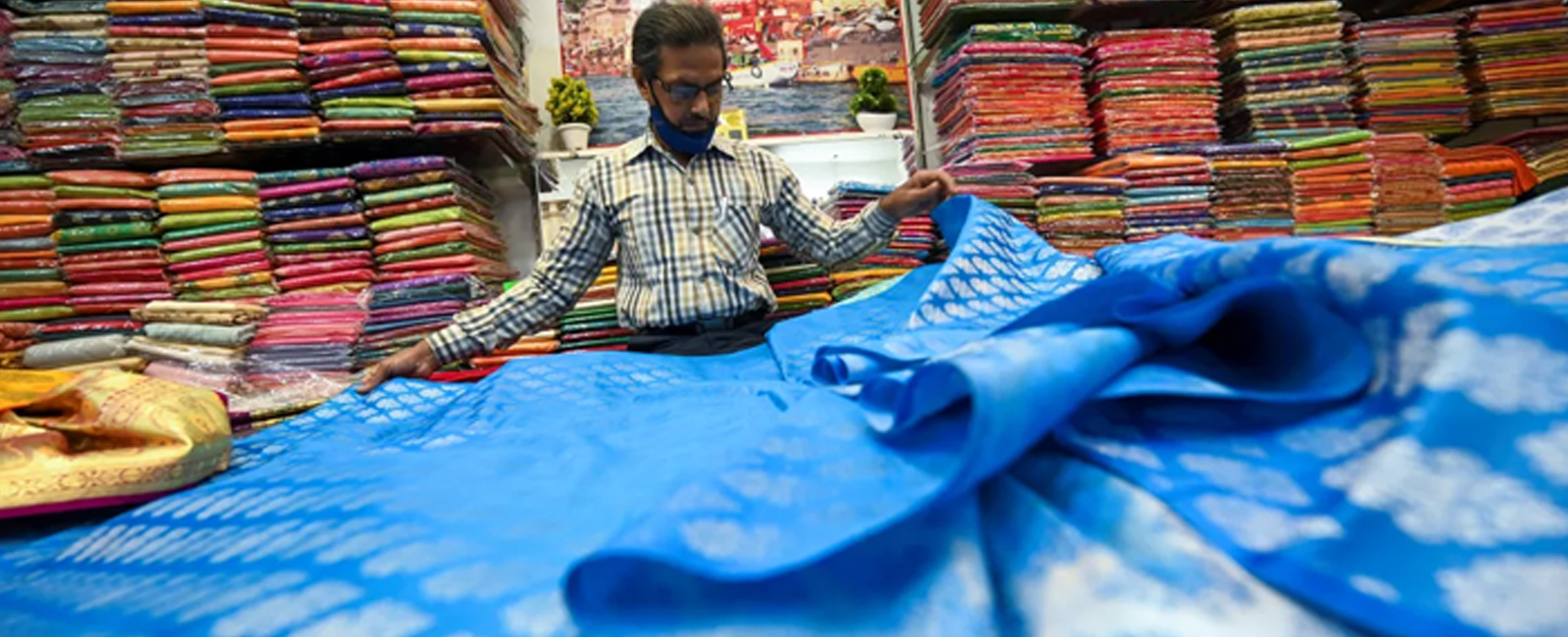Banarasi Brocade: From Kashi to Karachi, how weavers loom silk fantasies with silver, gold
India and Pakistan, once intertwined destinies now diverged, witnessed a beautiful fusion of talents and cultures

India and Pakistan, once intertwined destinies now diverged, witnessed a beautiful fusion of talents and cultures. From the heartlands of Uttar Pradesh, the charm of Bihar, the diversity of Delhi, the grace of Amroha, and the elegance of Lucknow, to the echoes of Banaras — each group of migrants brought a piece of their soul to contribute to Pakistan's rich tapestry.
In Karachi, the vibrant and industrious Banarasi community crafted a unique identity. They wove Karachi's story with threads of tradition and innovation, producing textiles that adorned both the city's culture and the very spirit of its people.
Geo Digital undertook a journey to connect with the Banarasi community, unearthing the secrets of their exquisite Banarasi textiles.
Banaras Town, nestled within the vibrant heart of Karachi’s Orangi Town, came to life when Banarasi set foot there after the birth of Pakistan. Today, the majority of this town's inhabitants still bear the indelible mark of that closely-knit community.
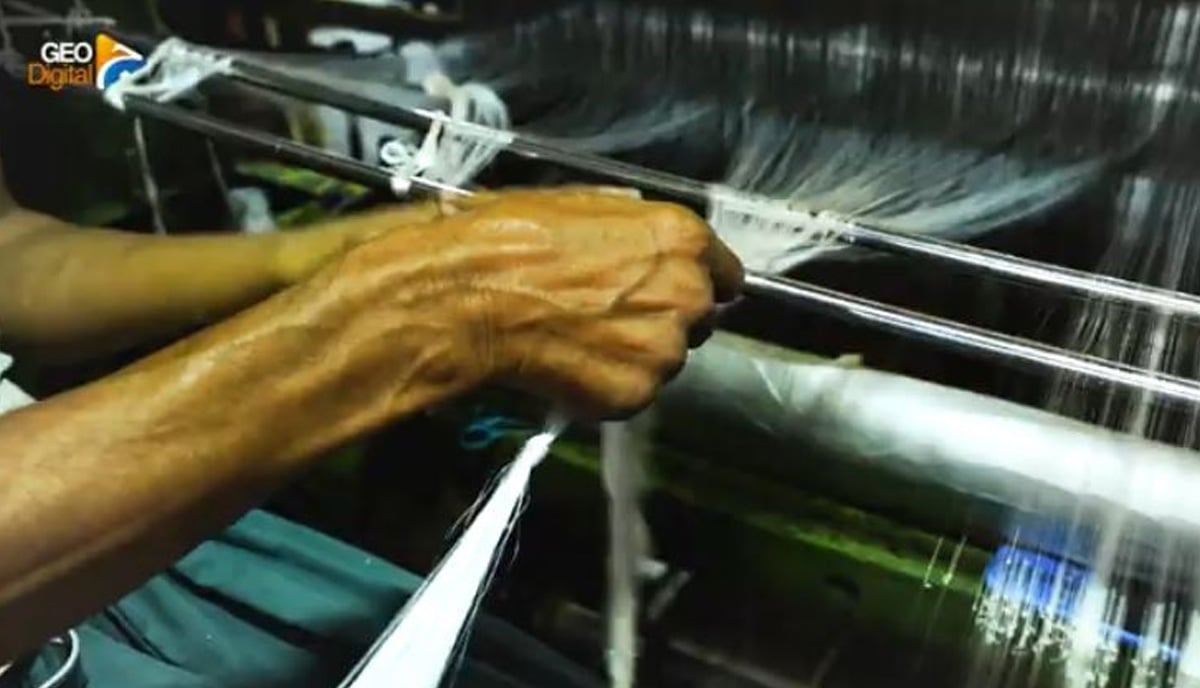
As Zafar Ullah Ansari, President of the Banarasi Cloth Merchants and Association, describes, Banarasis who had embarked on their journey from India post-partition found their new home in the makeshift settlements around the bustling industrial areas of Orangi Town.
One of these settlements, Banaras Colony, stands as a living testament to their resilience.
Beyond these horizons, you'll find those who embarked on their journey from eastern Pakistan after migration, leaving an indelible mark on the annals of Pakistan's history.
This land, allocated to the Bannarsi community during the tenure of former president General Ayub Khan, remains a vibrant hub, weaving tales of culture, unity, and diversity into the fabric of Pakistan's narrative.
However, when we asked Zafar about the history of his ancestors' business, the legendary Banarasi textiles, he humorously responded: "To uncover the origins of this fabric, I might need to travel to the heart of India, the city of Banaras. My knowledge, unfortunately, doesn't trace back to the very beginning."
In his witty response, Zafar emphasised the rich and intricate heritage of Banarasi textiles, suggesting that the roots of this exquisite craft are deeply embedded in the cultural fabric of Banaras, India. It's a reminder that some stories are meant to be discovered in the vibrant lanes and ancient bazaars of the city where they first began.
Zafar shared a fascinating insight into the creation of this unique fabric, revealing that it's a rare textile woven from the threads of silk produced by a tiny silkworm called "Cocoon."
These remarkable creatures generate a glossy secretion over a span of 4,000 yards! The precious cocoon secretion, residing in the mulberry trees, is then carefully harvested, processed, and transformed into fine linen.
The linen is deemed a luxurious and regal fabric, often commanding a price higher than regular textiles.
From the cocoon to the loom!
The initial stage of crafting this fabric involves the careful threading of silk, from the cocoon to the loom.
Irfan Ansari, a 42-year-old resident of Banaras Town, has been involved in this laborious work since his childhood. He explained that the threads first arrive from China, and then they go through various stages.
Irfan emphasised the critical role of the spinning wheel, where the weaving of threads takes place. He noted that the spinner's expertise is crucial since a malfunction in the wheel can disrupt the entire process. Before Banarasi fabric reaches the market, approximately 20 to 25 skilled individuals handle this intricate process.
Pakistani artisans take immense pride in their craft.
Zafar proudly states that while China exports silk from all over the world, the fabric they produce in Pakistan surpasses the quality of textiles from all other nations.
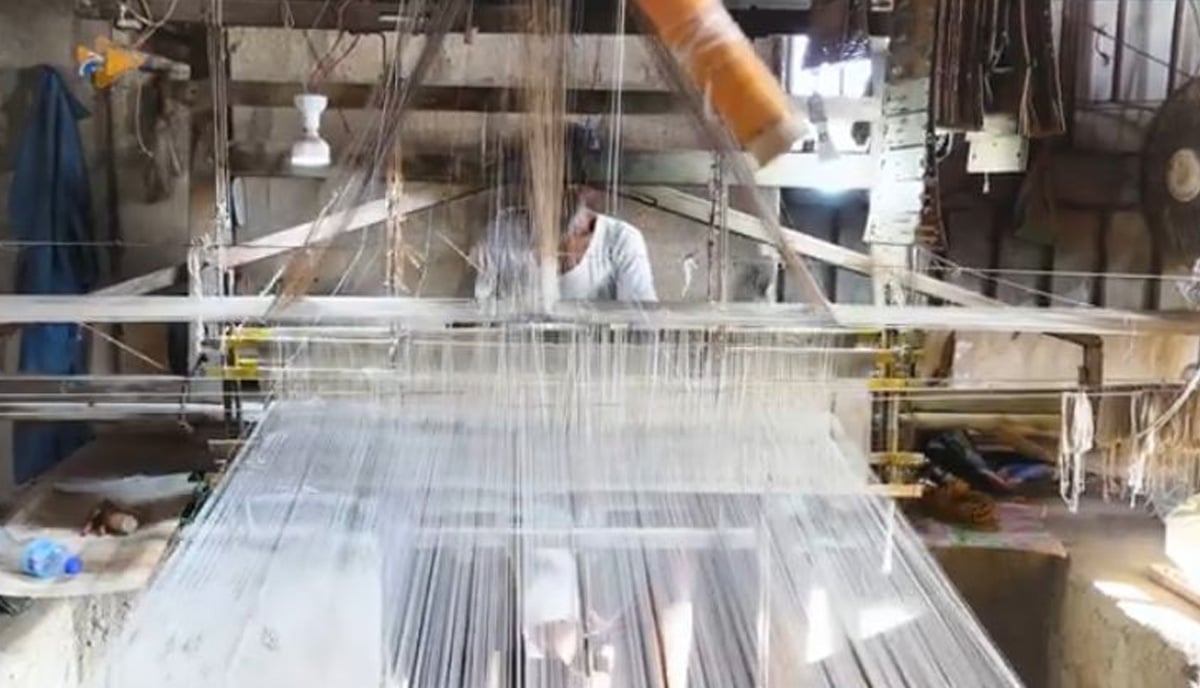
He enthusiastically shares, "Everything we create is woven from the heart of our silk thread." According to him, their craft is elevated by a devotion that emanates from their deep connection with the art.
Zafar goes on to explain that it was after settling in Pakistan that their community embarked on the journey of Banarasi textile production. The story of their workmanship, spanning from hand-operated loom (Khaddi) to power loom, is not merely a tale of technology and machinery; it's a narrative woven with traditional values and intricate artistry that's passed down through generations.
Their respect for the age-old practices and their commitment to preserving the essence of their art form stands as a testament to the enduring spirit of Pakistan's skilled artisans.
In a world driven by technology, they maintain the sanctity of their craftsmanship, proving that the heartbeat of tradition pulses strongly in their creations.
Threads of excellence: Pakistan's Banarasi fabric artistry
Zafar believes that the art of crafting Banarasi fabric, a gift from nature, might be a unique treasure only their community possesses. It's this exclusivity that allows their designs and the finesse of textiles to stand out amidst the sea of fabrics.
However, there's also a lament that the government hasn't given due attention to this industry.
Forty-year-old Abdul Aziz, who is involved in the initial stage of spinning the yarn, shares his story. His wife and children join him in the process of spinning and unravelling the threads.
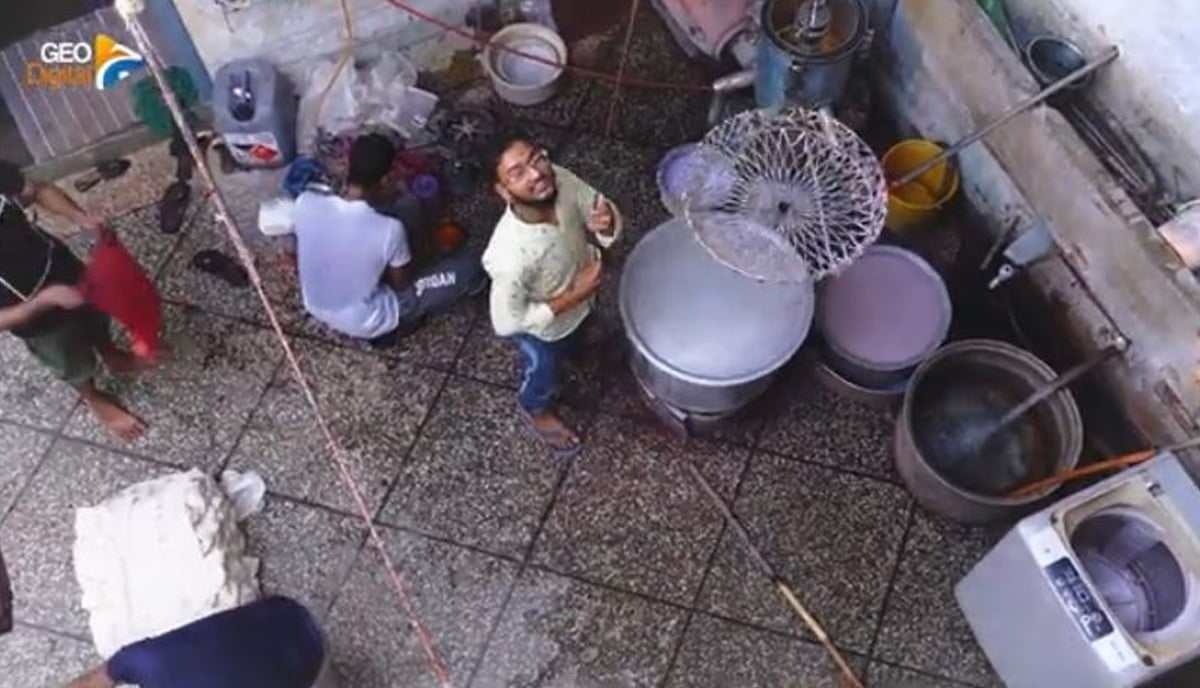
According to him, if his wife doesn't assist, he can't continue the work. The core of his job is wrapping the yarn onto rollers and then putting it on a power loom or a Khaddi. His view is that modern machines have made the process easier, although, in the past, it was done primarily by hand.
In essence, these craftsmen share a profound connection with their work, driven by tradition and an enduring sense of craftsmanship.
Mohammad Rafiq, hailing from the region of Kashi, shares a common bond with those who migrated from India to Pakistan. Rafiq's father was among those brave souls who undertook the journey to their new homeland in Pakistan. For the past forty years, Rafiq himself has been working in the heart of Banaras Town.
His craft involves operating a "Khaddi", a traditional hand-operated spinning wheel. It's a task that engages both mind and hands, much like steering a sewing machine. Rafiq emphasises that this trade is a collaborative effort, with various individuals contributing to different aspects, from spinning the yarn to joining the threads at various stages.
Rafiq's story is a testament to the interconnectedness of the skilled artisans, with each stage of the process requiring a different set of hands and expertise, all working together to create the masterpiece of Banarasi textiles.
Creating fabric runs deep in the blood of the Banarasi community, and their love for the craft is undeniable. Zafar, when discussing the types of textiles, explained that whether it's cotton or silk, it all used to be woven on the Khaddi.
He shared an intriguing tidbit, passed down through generations, that traces the use of Khaddi back to the time of Hazrat Shees (Seth). However, as times have evolved, machines have taken centre stage. The power loom has stepped in, but there's a distinction between its work and the artisanal Khaddi, a difference marked by time and cost.
The fabrics produced on the power loom, like sarees, begin at around 15,000 rupees, while Khaddi sarees start at 18,000 rupees. Yet, what sets the two apart is not just the price but the speed of production. Khaddi, woven with patience and skill, takes time, while the power loom speeds up the process.
Once the fabric is off the Khaddi or power loom, the next phase involves finishing.
Then comes the intricate work of dyeing and bleaching, adding the final touches to these masterpieces of Banarasi textiles.
A fabric of royalty
Zafar shed light on the historical significance of Banarasi textiles, revealing that throughout history, these fabrics adorned the courts and palaces of the Mughals and other royalty. It was considered one of the favoured textiles of the nobility, earning it the moniker of "Mughal design fabric."
Banarasi fabric's royal association speaks to its opulence and intricate beauty, making it a beloved choice for those who appreciate the finer things in life.
According to the accounts of the older generation, the distinctive minaret-like designs of Banarasi textiles were considered reminiscent of royal attire. This regal association earned it the title of "Royal Fabric."
Zafar exemplified this by mentioning that during the British colonial era, several members of the British royalty, including Queen Victoria, adorned clothing made from Banarasi fabric.
In 2007, the Bollywood actress and former Miss World, Aishwarya Rai, had most of her wedding ensembles, particularly the Banarasi sarees, crafted in Banaras (India).
An article from the Times of India also reports that the Bachchan family had 11 sarees prepared for Abhishek Bachchan's wedding ceremony, with an estimated value of Rs250,000.
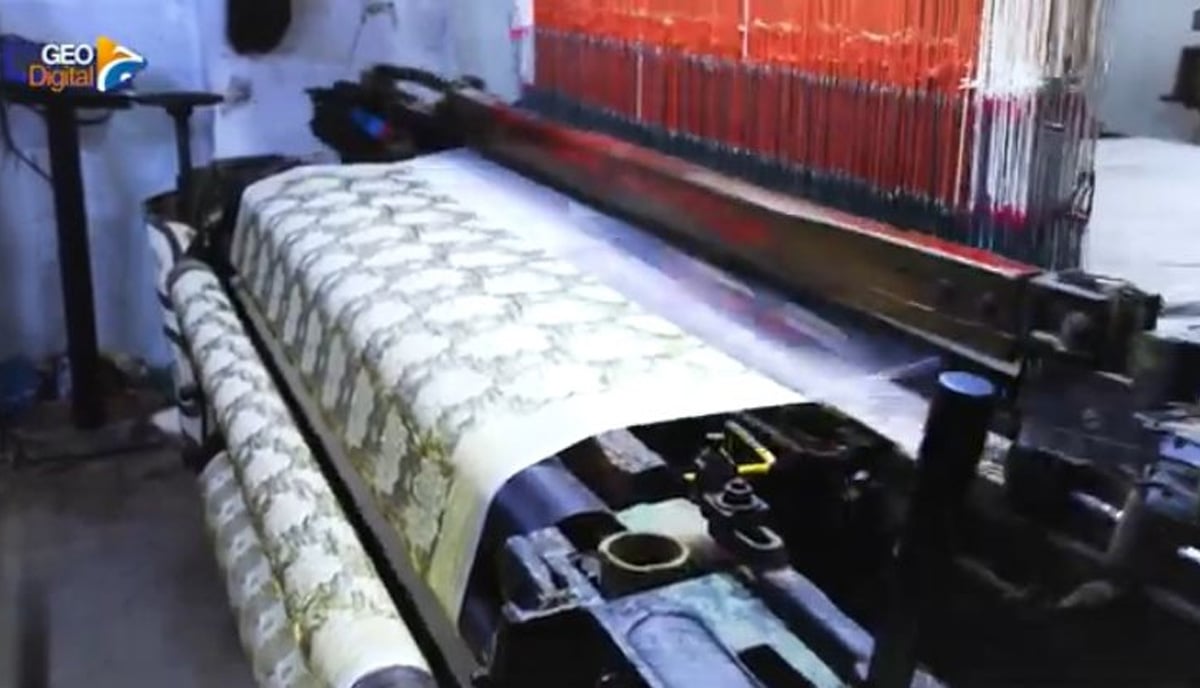
This historical and contemporary significance showcases the timeless allure and elegance of Banarasi textiles.
In the realm of crafting Banarasi textiles, the stages of dyeing and finishing are intricately accomplished without the aid of machines. Abdul Majid, a young artisan, is among those who partake in both the dyeing and finishing processes alongside his family and kin.
He emphasises that he never considered pursuing any other profession, as this is a heritage deeply rooted in his family's traditions and regal lineage.
Abdul Majid's unwavering commitment to preserve this ancestral craft shines through, as he works tirelessly alongside his family members. In their two-story dwelling, several members of the Majid family coexist harmoniously, with living quarters on the upper floor and the bustling world of craftsmanship thriving below.
The new generation is deeply committed to this craft.
The Banarasis have their own unique customs and traditions within the community. For instance, when their businesses experience a lull, they come together for a special three-day tradition of offering prayers at the mosque, the ritual called ‘Kul Parhaiya’.
Zafar shared insights into this practice, explaining that all the members of their community shut their businesses, gathered at the mosque, and prayed to the Almighty believing that after this sacred ritual, their businesses would once again thrive, and they could resume their trade with renewed energy.
This heartwarming tradition reflects not only their unwavering faith but also their dedication to their craftsmanship and the spiritual values that guide their lives.



